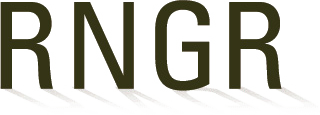
Andropogon (virginicus)
|
John Vandevender Center Manager USDA NRCS - Appalachian Plant Materials Center P. O. Box 390 Alderson, West Virginia 24910 304-445-3005 John.vandevender@wv.usda.gov http://plant-materials.nrcs.usda.gov/wvpmc |
|
| Family Scientific Name: | Poaceae | ||
|---|---|---|---|
| Family Common Name: | Grass | ||
| Scientific Name: | Andropogon virginicus L. | ||
| Common Name: | broomsedge bluestem | ||
| Species Code: | ANVI2 | ||
| Ecotype: | USDI-NPS | ||
| General Distribution: | Widely distributed throughout the eastern United state from Massachusetts and Connecticut southward to Florida and westward to Texas. It is also native to California. | ||
| Known Invasiveness: | None | ||
| Propagation Goal: | plants | ||
| Propagation Method: | seed | ||
| ProductType: | Container (plug) | ||
| Time To Grow: | 6 Months | ||
| Target Specifications: | A well developed plant suitable for mechanical transplanting that has at least 6 inches of top growth and a dense, fibrous root system. | ||
| Propagule Collection: | Seed of USDI-NPS broomsedge bluestem was hand harvested from existing populations within the confines USDI-National Park Service sites. The seeds of broomsedge are evenly distributed along the 2-5 ft. stems and are striking in fall and winter when the fine hairs of the expanded racemes catch the sunlight. The clump-forming, perennial grass turns a tawny brown in fall. | ||
| Propagule Processing: | Seed is conspicuously tufted or covered with silky white rather stiff racemes. Seed is de-tufted to facilitate handling. Tufts are typically removed by passing the seed through a brush machine equipped with a coarse mantle and medium stiff brushes at a brush speed of 10-12 cycles per minute. | ||
| Pre-Planting Treatments: | De-tufted seed is planted into round cell greenhouse flat liners with 38 cells per flat that have been filled with coarse processed bark and composted pine bark growing medium. Seed is surface sown at a rate of 3-5 seeds per cell and lightly covered with starter sized, 1/16" - 1/8" diameter, granite poultry grit to combat damping off diseases. Prepared flats are lightly hand watered to slightly moisten the growing medium and cold stratified at 35 degrees Fahrenheit for a minimum of 21 days. | ||
| Growing Area Preparation/ Annual Practices for Perennial Crops: |
Stratified seed is placed in a greenhouse maintained under natural lighting and at a minimum temperature of 70 degrees Fahrenheit. Soil moisture is maintained during germination by an automatic overhead watering system set to cycle for 20 seconds every thirty minutes during daylight hours. | ||
| Establishment Phase: | Germination typically occurs 7 - 10 days after placement in the greenhouse. | ||
| Length of Establishment Phase: | 7-10 days | ||
| Active Growth Phase: | After germination, seedlings are maintained in a greenhouse environment 2-4 months to promote development of a plug with at least 6 inches of top growth and a dense, fibrous root system suitable for mechanical transplanting.Watering is reduced to overhead hand watering once daily. seedlings receive a water soluble complete fertilizer bi-weekly until hardening. | ||
| Length of Active Growth Phase: | 6 months | ||
| Hardening Phase: | Acclimation is typically accomplished through placement of seedlings outdoors in a protected location for a 1-2 week period prior to transplanting. | ||
| Length of Hardening Phase: | 1-2 weeks | ||
| References: |
USDA, NRCS. 2015. The PLANTS Database (http://plants.usda.gov, 6 March 2015). National Plant Data Team, Greensboro, NC 27401-4901 USA. Strausbaugh, P. D. and E. L. Core. 1977. Flora of West Virginia, 2nd Edition |
||
Citation:
Vandevender, John. 2015. Propagation protocol for production of Container (plug) Andropogon virginicus L. plants USDA NRCS - Appalachian Plant Materials Center Alderson, West Virginia. In: Native Plant Network. URL: https://NativePlantNetwork.org (accessed 2025/09/21). US Department of Agriculture, Forest Service, National Center for Reforestation, Nurseries, and Genetic Resources.



